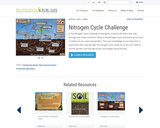
This game reviews the nitrogen cycle and can be used to reinforce concepts after students' discussion on nitrogen fixation, ammonium, volatilization, nitrate and denitrification.
- Provider:
- Nutrients for Life Foundation
- Date Added:
- 03/20/2018

This game reviews the nitrogen cycle and can be used to reinforce concepts after students' discussion on nitrogen fixation, ammonium, volatilization, nitrate and denitrification.

In this multimedia lesson, students learn about deep-sea ecosystems. Associated interactive activities include "Hydrothermal Vent Food Webs," where students reconstruct a hydrothermal vent fauna food web on a digital diagram and "Evolutionary Puzzle," where students investigate how evolutionary relationships support the theory of plate tectonics.

This series of lessons focuses on food production in ocean ecosystems. In Lesson Plan 15, "Being Productive in the Arctic Ocean," students will investigate how organisms make food, either through photosynthesis or chemosynthesis. They will also identify factors that limit primary productivity and explain their effects. In Lesson Plan 16, "Chemosynthesis for the Classroom," students will observe the development of chemosynthetic bacterial communities in black mud and explain the relevance of chemosynthesis to biological cold-seep communities. In Lesson Plan 17, "Biochemical Detectives,' students will explore the energy-obtaining strategies of cold-seep organisms and study actual data from biochemical studies involving these organisms. Students will write brief essays summarizing each lesson as assessment.

In this lesson, students investigate the nitrogen cycle and recognize that plants and animals need nitrogen to live, using the peanut plant as an example.

This course was created by the Rethink Education Content Development Team. This course is aligned to the NC Standards for 8th Grade Science.

This course was created by the Rethink Education Content Development Team. This course is aligned to the NC Standards for 8th Grade Science.

This course was created by the Rethink Education Content Development Team. This course is aligned to the NC Standards for 8th Grade Science.
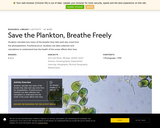
Students calculate how many of the breaths they take each day come from the phytoplankton, Prochlorococcus. Students use data collection and calculations to understand how the health of the ocean affects their lives.
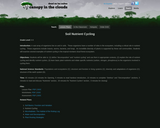
Students will examine several examples of nutrient cycling in the tropical montane cloud forest ecosystem. Students will learn basic plant nutrients and relate specific nutrients such as carbon, nitrogen, and phosphorus to the organisms involved in cycling them.

Students obtain, evaluate, and communicate information about flows and cycles of energy in cold-seep ecosystems. Students will develop a model that describes some of the interdependent relationships in cold-seep ecosystems. Students will also develop and use a model to explain states and changes between states of methane hydrates.

Students participate in an activity that demonstrates the principles and dynamics of food chains and how energy is transferred when it passes from one organism to another.

Students analyze data and maps to understand how increased population growth impacts the water quality of the Chesapeake Bay. Then they explore how the health of the Bay affects its animals.

Students identify cause-and-effect relationships between sugar cane production and the health of the Great Barrier Reef in Australia.
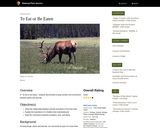
In this lesson, students demonstrate energy transfer and connections between plants and animals.
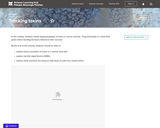
Students model bioaccumulation of toxins in marine animals. They participate in a food web game where feeding decisions determine their survival.

In this lesson, students combine their knowledge with information from dictionaries to define "urban forest" and “ecosystem.” They relate their school to an ecosystem and then create a web diagram to show the connections that parts of urban forests have. They extend that idea to the connections urban forests have to other ecosystems using the water cycle as an example. To conclude, students write a few paragraphs to describe and compare urban forest ecosystems and rural forest ecosystems.

In this lesson, students will analyze real scientific data from a short visualization clip to form logical hypotheses about what drives the migration patterns of raptors. Students will also describe and explain the connectedness of organisms within and across ecosystems and illustrate how primary productivity is the foundation of all food webs and how seasonal changes in primary productivity influence the behaviors of higher order consumers.
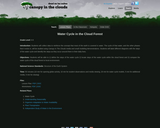
Students will collect data to reinforce the concept that most of the earth is covered in water. The cycle of that water, and the other phases that it exists in, will be studied using the Canopy in the Clouds media and small modeling demonstrations.

Students will use Canopy in the Clouds media to examine the effect of water on decomposition. Students will create an original procedure to test a scientific question about decomposition and then build and deploy decomposition bags in their local ecosystem.

In this activity students model the cycles of matter by creating an ecosystem in a jar and observing how it changes over time. Students will also research the nitrogen, water, and carbon cycles and prepare presentations to share information with their peers.